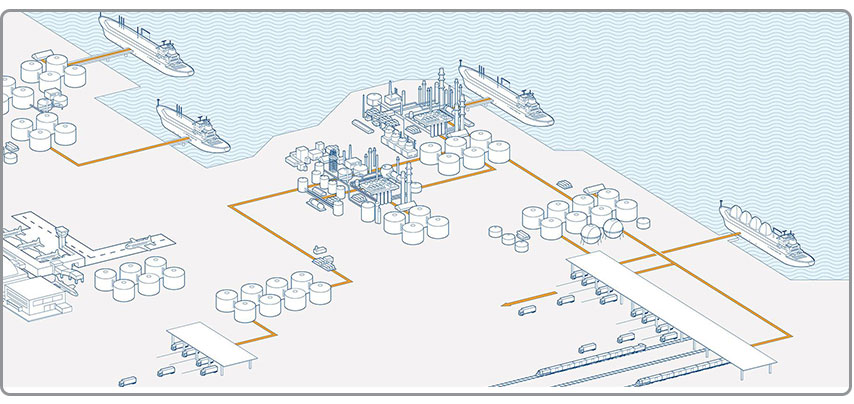Why PCS?
A process Control System (PCS) or Process Automation System (PAS) or also Integrated Process Control System (IPCS) are used to automatically control a process such as chemical, oil refineries, and paper and pulp factories. The PAS often uses a network to interconnect sensors, controllers, operator terminals and actuators. A PAS is often based on open standards in contrast to a DCS (distributed control system).
Process automation involves using computer technology and software engineering to help power plants and factories in industries as diverse as paper, mining and cement operate more efficiently and safely.
Now a days, automation control and infrastructure protection are critical areas of any plant operation. New control systems sometimes integrated with Safety systems, creates a unified platform that offers a single operating view of safety and automation systems in plant operations while maintaining the required separation and redundancy.
The automation solution increases process availability, production and profitability of the plant, while ensuring safety and security of personnel, equipment and the plant environment.
These projects usually have some separated parts each one has its own operation philosophy but whole the plant should be managed globally to maintain predefined function and produce the materials which the plant designed for. For managing continues operation of Oil/Gas these fields and making stable plant, a distributed control system installed to monitor and control the plant.

A Process Automation components
There is so many different systems and methods to control a big process especially in Oil and Gas field like petrochemical or refinery plant.
•DCS System for managing normal operation of process. Monitoring and control of the system manually or automatically to have available process flow is the main role of this system.
•ESD system which responsible for managing system in emergency states to force the system to a safe status.
•PLC Systems usually used to control small packages installed for different units and then integrated in DCS system for totally management system.
•Analytical software to Analyze system status, predict the future to make the best decision
•Control network which connects all distributed control systems together. Through this network all control messages will be transported with highest reliability:
• Local area network to connects different sub-systems in different LERs (Local Equipment Room) to Main Control Building (MCB)
•I/O Bus networks that connects control system elements to plant instruments and also system packages. These network can help us for high performance, low cost and high reliable instrument networks
•Asset Management System to manage field instruments remotely like change parameter setting, maintenance programs and so on